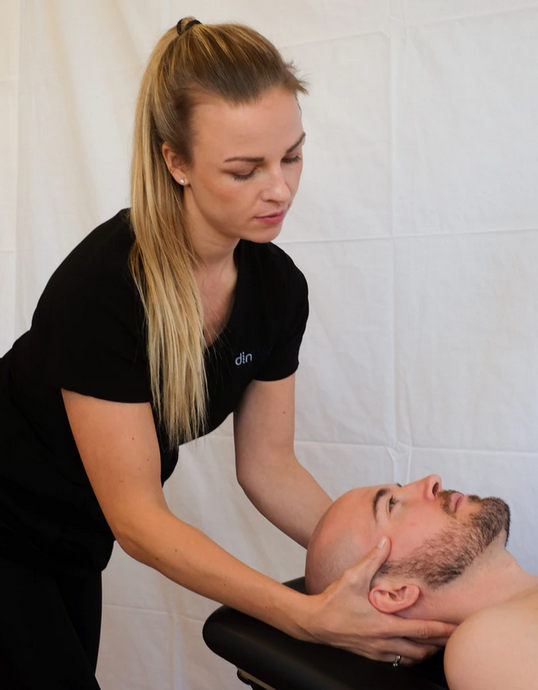nalco group
bone, muscle & joint pain physio
BOOK NOW / WHATSAPP ABOUT YOUR PAIN OR INJURY
- NOVENA 10 Sinaran Drive, Novena Medical Center #10-09, Singapore 307506
- TAMPINES 9 Tampines Grande #01-20 Singapore 528735
- SERANGOON 265 Serangoon Central Drive #04-269 Singapore 550265
Home > Blog > Spinal Physio > Neck Pain > Neck Stiffness Physiotherapy
Neck Stiffness Physiotherapy

Having tightness and stiffness in our neck is usually caused by either
- muscle spasms
- injury such as neck sprain or whiplash
- posture-related neck pain
- "woke up with neck pain/stiffness"
- tightness
- trigger myofascial points
in our neck muscles. There can be more factors causing stiff neck, but generally it's muscle spasms that leads to a stiff neck developing, and it's a protective mechanism due to an underlying neck issue.
Symptoms of neck stiffness
Frankly, our physio clinics and senior physiotherapists treat a high number of back and neck conditions, and neck stiffness is a very common neck problem that we treat.
Usually there is only two key symptoms:
- neck pain
- neck stiffness
and together they cause decreased neck joints range of movement and discomfort and difficulty moving about (harder to turn head to look left and right) etc.
The causes can be:
- muscle spasms
- injury such as neck sprain or whiplash
- posture-related neck pain
- slipped/herniated spinal discs
- "woke up with neck pain/stiffness"
- tightness
- trigger myofascial points
- problems with the spinal vertebral facet joint
- potential undiagnosed/misdiagnosed neck vertebral fracture
- etc
Most of the time, patients wake up with a painful and stiff neck. Sometimes, their necks may become "stuck" or "locked" after a sudden or sharp movement. What this means is that their heads may be too painful or difficult to move, and any attempts to move the neck may make the neck pain worse.
In some cases, the pain in their neck can travel (radiate) up or down the neck too.
Who is more at risk of developing neck stiffness and neck pain?
Usually, people who are higher risk of this condition are people who are either:
- predisposed to having it due to genetic / structural conditions
- lifestyle of using a lot of mobile devices (remember text neck)
- working using a lot of mobile/display devices
- natural ageing and wear and tear
Usually, a number of our patients are bankers, executives, teachers and managers, who can often be found reading and consuming data from their mobile devices or documents to read and correct, leading them to over-bend their necks.
Doing this over and over a period of time and their necks gets overly strained repeatedly, leading to neck injuries and neck stiffness.
Neck Stiffness Physiotherapy Treatment

Stiff necks can be effectively managed and treated by one of our senior spinal physios, who will first do an indepth assessment of your neck stiffness to diagnose the cause of the problem.
Following diagnosis, the senior physiotherapist will then create a custom physio intervention plan for you, and depending on the causes of the problem, you may be treated with a combination
- heat therapy to loosen the neck muscles, tissues and joints
- cold therapy to decrease inflammation and pain
- ultrasound therapy to accelerate soft tissue healing
- manual therapy
- joint manipulation and mobilization to increase the natural range
- pain relief physiotherapy
- stretching and flexibility physiotherapy
- dry needling physiotherapy
- computerized decompressive spinal traction
- neck strengthening
- core stability strengthening
Our senior physiotherapist may recommend you to undergo regular deep tissue release massage therapy to ensure that your neck muscles will be in optimal length to prevent injuries and neck joint locking.
